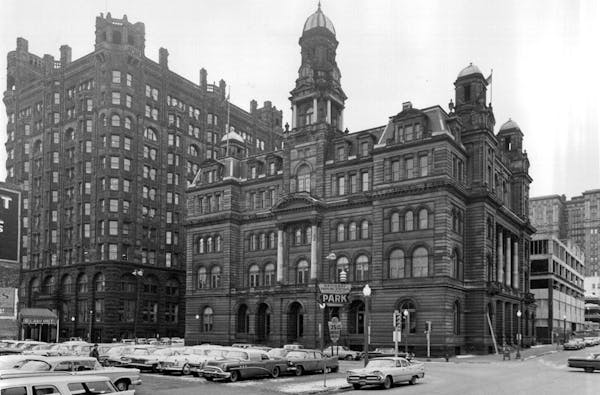You may not know the name Arthur Carhart, but anyone who enjoys wilderness owes him a debt of gratitude.
Along with fellow environmental advocates like Aldo Leopold and Ernest Oberholtzer, he played a part in the formation of wilderness areas like the Boundary Waters Canoe Area Wilderness (BWCA), one of the most visited wild areas in the country today.
Minnesota's roadless wilderness refuge, with more than 2,000 backcountry campsites and 1,200 miles of canoe routes, would look very different today without the radical vision of Carhart, who in 1919 was the first landscape architect to work for the U.S. Forest Service.
Instead of building roads and paving the way for development, Carhart argued that the extraordinary fabric of lakes in Superior National Forest should be the roadways themselves.
In the early 20th century, this was an entirely new concept of landscape architecture and park planning.
For generations, the goal for American forest managers had been to maximize the economic value of the land. But by the time Carhart joined the Forest Service, many of the timber stands in national forests had been cut and federal revenue from timber leases was in decline.
Carhart was hired as part of a push to encourage outdoor tourism, which, it was hoped, would bring in revenue. He turned out to be pivotal in expanding the economic model of forest management beyond timber and mining to more inclusive activities such as camping, hiking, snowshoeing, and of course, canoeing.
Carhart's idea for a wilderness without roads came at a time when cars were on the upswing, so there was a great deal of interest in building roads. In Minnesota, there was strong support for a road from Ely to the Gunflint Trail, which might have bisected the wilderness area and opened up development sites on private holdings.
But Carhart was well positioned to fight against that road. He'd already had success developing a wilderness area in Colorado.
In 1919, the Forest Service assigned him to survey a road around Trappers Lake in Colorado. He came back with the unheard of recommendation that no road be built and that the area be set aside for wilderness. Trappers Lake, which some view as the birthplace of the country's wilderness system, is roadless and protected to this day.
In 1921, Carhart and his Forest Service team explored the Superior National Forest/Quetico area, which he recommended be set aside as a wilderness area.
Thanks to the rare combination of support from within the Forest Service, conservationists and a handful of wealthy Twin Cities families, Carhart's vision eventually became reality — as the BWCA.
A little help
Carhart wasn't alone in his attempts to establish a wilderness area in northern Minnesota.
In 1902, Minnesota Forest Commissioner Christopher C. Andrews encouraged the state to reserve 500,000 acres of second-growth forest in the area from being leased to loggers. Later, he protected another 140,000 acres of wilderness. He also played a role in convincing the Ontario provincial government to jointly manage the wilderness. In 1909, the Superior/Quetico partnership was formally recognized.
Carhart was a friend of famed ecologist Aldo Leopold, who as a Forest Service employee helped to establish the Gila Wilderness Reserve in New Mexico in 1924. Leopold went on to write the much lauded memoir of Wisconsin ecology, "A Sand County Almanac."
Carhart, too, wrote books, dozens of them — from novels to fishing, forestry management and conservation guides.
He left the Forest Service five years after he joined it, but he continued to champion the virtues of wilderness until his death in 1978.
In his 1955 book, "Timber in Your Life," Carhart summed up his passion for the wilderness.
"Perhaps the rebuilding of the body and spirit is the greatest service derivable from our forests, for what worth are material things if we lose the character and quality of people that are the soul of America?"
Frank Edgerton Martin is a landscape historian and consulting writer for architecture and design firms.
![A first-timer documents his Boundary Waters Canoe Area Wilderness experience. ] Star Tribune Photos by Bob Timmons ORG XMIT: MIN1508281534030290](https://arc.stimg.co/startribunemedia/E4QACOOSGOWPIVKPNI4EPVV75M.jpg?fit=crop&crop=faces&w=550&&auto=format)





